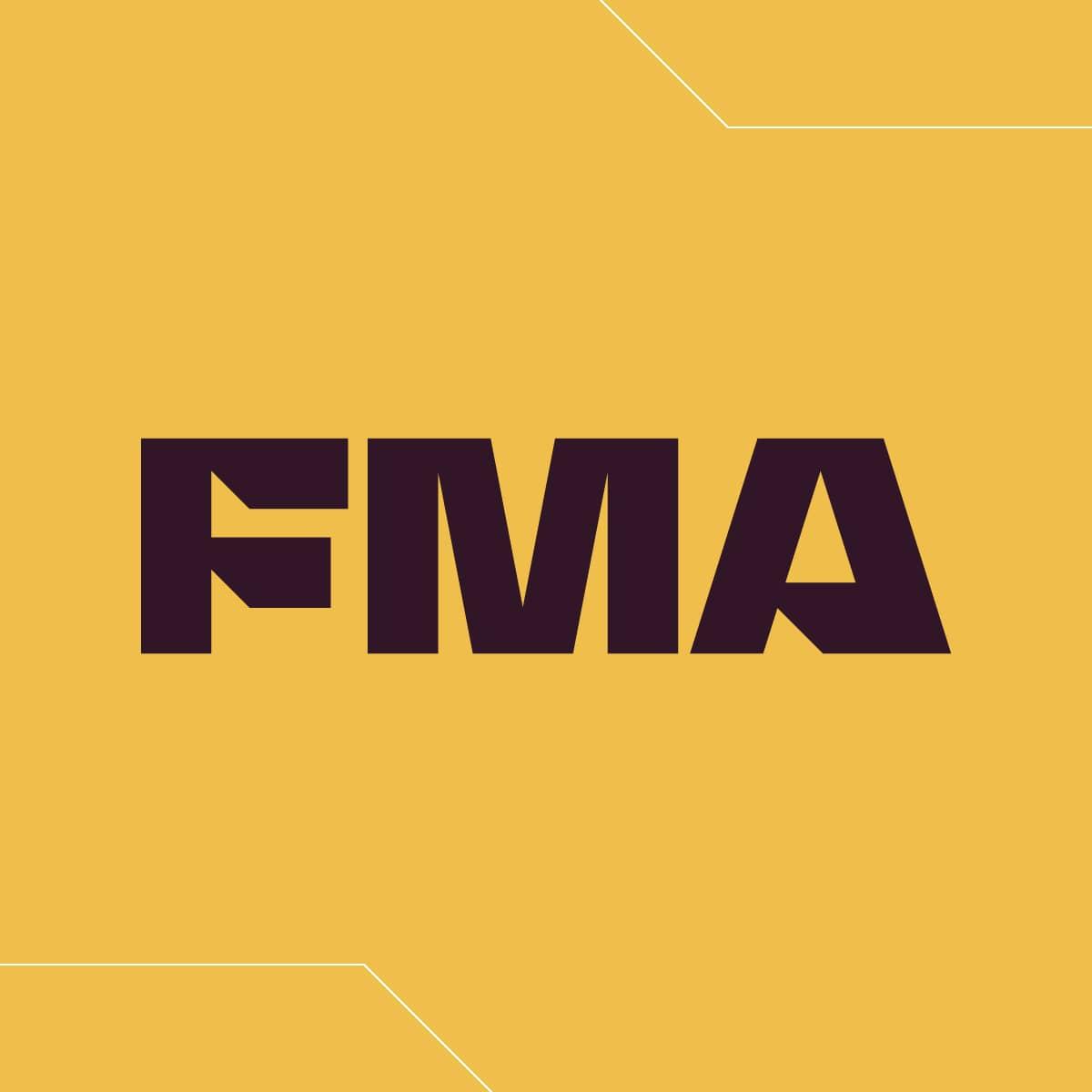How 5 Manufacturers Reduce Water Use
By Jaan Koel | July 27, 2013
Category: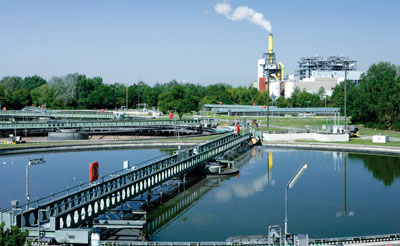
Not only does water comprise about 70 percent of our bodies, it also drives myriad industrial processes and our economy. Manufacturers seek to reduce water use.
In 25 years or so the world population is expected to reach 9 billion, according to the UN Population Division. Even at today’s 7 billion population count, many parts of the world are already thirsting for safe drinking water—let alone water to produce goods.
Reduce Water Use Primer
Dry-in-place—A chemical agent that promotes drying and protects the steel from flash rust
Dry machining—A lubrication method that uses a mist comprising a very small amount of oil and water that is sprayed directly onto the tips of cutting tools
Reverse osmosis—A water purification technology that uses a semipermeable membrane
Membrane biological reactor—A water recycling system that separates and treats liquids and solids
Short interval control—A powerful method for improving production efficiency by focusing attention on major losses and forecasting risks over a short time
Virgin fiber—Fiber sourced from trees or plants
Ultrafiltration—A filtration method using high-tech membranes with pores as small as 10 nanometers
The global water supply industry is valued at around US$370 billion and growing at about 5 percent annually. This valuation includes everything from public and municipal services to water equipment to private industry.
Nowadays industrial businesses, especially the more enlightened ones and those with products directly connected to water supply (for example, beverages, food, semiconductors, computer chips, pulp and paper), are regarding water consumption more seriously than ever before, and seek ways to reduce water use.
“On the business front, water is becoming recognized as a risk area,” said Anthony Watanabe, water consultant and president and CEO of Toronto-based Innovolve Inc. “Businesses act on risk and opportunity.”
Five manufacturers with products as diverse as autos and tissue paper have implemented innovative water reduction strategies—some high-tech, some low-tech—that have reduced their water consumption by millions of gallons and saved millions of dollars.
1. Ford Motor Co.

Figure 1
Ford Motor Co. has taken many measures to reduce water consumption in its production of cars. It downsized its painting process from three stages to two stages, reducing water use by almost one-third.
- Water consumption reduction = 883 million gallons annually (average)
- Cost reduction = $22 million annually (based on Dearborn, Mich., average cost per gallon)
An example of an organization that goes the extra mile to minimize risk and maximize opportunity in its water usage is Ford Motor Co., Dearborn, Mich. Thanks to new methods the company uses to produce a car, it reduced its water use in the U.S. by 71 percent and by 62 percent globally—saving 10.6 billion gallons between 2000 and 2012 (see
Figure 1).
This is equivalent to the annual water consumption of about 100,000 U.S. homes, according to the U.S. Environmental Protection Agency (EPA).
The automaker decreased its per-vehicle water use from 9.8 cubic meters (2,588 gallons/$6.50) in 2000 to 4.3 cubic meters (1,136 gallons/$2.90) in 2012 (again, based on Dearborn rates). Now the company is working to reduce the average amount of water it uses globally per vehicle by 30 percent by 2015, with 2009 as its base year, in both its power train and vehicle assembly plants.
Dry Machining to Reduce Water Use. In its power train plants, Ford had been using the traditional solvent/high-volume-water mix to machine its engine and transmission parts. It then started working with research institutions and universities to find a method that uses less water and, as a result, became a leader in what is called dry machining. This alternative method uses a lubrication mist consisting of a very small amount of oil mixed with a minimal amount of water that is sprayed directly onto the tips of cutting tools, achieving the same quality result as the solvent/high-volume-water mix approach.
“This saves us an enormous amount of water in our plants across the world—with the added benefit of eliminating the need to dispose of an oily waste stream,” noted Ford Senior Environmental Engineer Heidi McKenzie.
Three-stage to Two-stage Painting. The company achieved even greater water savings in its assembly plants by eliminating a stage in the painting process.
The first stage entails immersing and spraying raw metal body assemblies in a phosphate bath to clean and condition them to remove contaminants and promote paint adhesion. A certain amount of water is needed to help regulate the humidity and temperature of the air inside the painting booths to ensure optimal paint-to-metal bonding. However, the largest amount of water is used in the water wash basins underneath the vehicles to catch overspray as they’re being painted.
This water, which contains the paint solids overspray, is outsourced to vendors that specialize in treating and disposing of it in an environmentally approved manner.
“In our older plants, we have a three-stage painting process: one booth for primer, one for base coat, and the third for clear coat,” said McKenzie. “In our new plants, we have reduced that proc-ess to two stages, combining the primer and base coat in one booth, and application of the clear coat in a second booth. This change in itself has saved close to one-third of the water we had been using.”
Wastewater Recovery, Reuse. The automaker used an additional measure to reduce water by installing membrane biological reactors that make water suitable for reverse osmosis. This allows up to 65 percent of a plant’s wastewater to be reused elsewhere in the facility, such as in cooling towers, cleaning, and irrigation.
Thanks to these and other measures, water usage at Ford’s Hermosillo, Mexico, stamping and assembly plant dropped by 40 percent between 2000 and 2010 while production doubled during that same period.
“If Ford meets its goal of reducing global water usage by 30 percent by 2015, we will have dropped the amount of water needed to produce an average vehicle to 3.5 cubic meters [925 gallons/$2.31] in 2015 from 9.8 cubic meters [2,588 gallons/$6.50] in 2000,” added McKenzie.
2. Kimball Office
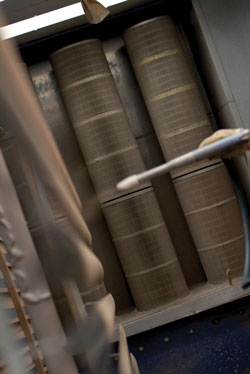
Figure 2
Kimball Office reduced the volume of water needed in its precoating wash station by 13 million gallons between 2008 and 2012.
- Water consumption reduction = 2.6 million gallons annually
- Cost reduction = $89,600 annual cost savings (based on average water rates in Jasper, Ind.)
Kimball Office of Jasper, Ind., has a similar success story to relay. Thanks to measures the company has taken in how it powder-coats metal assemblies, it has managed to reduce its water consumption each year since 2008. “We’ve reduced our water usage by 13 million gallons between 2008 and 2012, or 2.6 million gallons annually,” said Kimball Operations Program Manager Steve Brewster. Based on water rates in Jasper, which are currently $3.46 per 1,000 gallons, this means an annual savings of approximately $89,600.
Dry-in-Place. Kimball begins its painting process with a chemical bath to remove contaminants and increase paint adhesion (see Figure 2). The most significant improvement resulted from eliminating the final clear-water rinse stage before the powder coating process.
Because metal assemblies may be set aside for up to eight hours before being powder-coated, a drying stage is necessary to protect the metal from flash rust that would ruin the finish (see Figure 3). “Instead of a clean-and-rinse stage, this dry-in-place agent protects the steel from flash rust and does not have to be washed off before it is powder-coated,” said Brewster.
“This change is saving us 50 percent of water in our industrial process.”
3. MillerCoors
In 2008 MillerCoors LLC, with headquarters in Chicago, empowered its employees to develop and deploy measures to reduce the 4.1 barrels (129 gallons) of water it was using to produce one barrel of beer. Today, thanks largely to innovative methods to reduce cleaning and flushing of its systems, MillerCoors uses 3.6 barrels (113 gallons)
of water, on average. At the going rate for water in Chicago of $2.89 per 1,000 gallons, that means the 0.5-barrel, or 15.75-gallon, difference would amount to a savings of about 6.4 cents per gallon. That may not sound like a lot, but multiplied by millions of barrels, it really adds up.
“That’s a testament to our employees, a significant improvement of our operations, and a new benchmark for the industry,” said MillerCoors Director of Sustainability Kim Marotta. “Our goal is to reduce water consumption by 15 percent from 2008 to 2015.”
Short Interval Control to Reduce Water Use. One of the brewery’s approaches involves implementing short interval control (SIC). SIC is a best-practice methodology developed to analyze performance on an ongoing basis and support long-term improvements, Marotta explained. “When we put SIC into place, employees became much more engaged. As a result of this and other initiatives, we’ve been saving
tens of millions of gallons of water annually in our plants.”

Figure 4
At the Showcase Barley Farm, located in Idaho’s Silver Creek Valley, MillerCoors and The Nature Conservancy work with farmers to pilot innovative agriculture practices that help reduce water use.
Direct Irrigation to Reduce Water Use. Another approach with even more significant results is reducing water needed for barley agricultural production. That irrigation accounts for about 90 percent of the overall water consumption attributed to an average bottle of beer (see Figure 4). To accomplish that reduction, the brewery worked with The Nature Conservancy in Idaho’s Silver Creek Valley, Marotta said. “We worked with one farm in particular and have saved over 270 million gallons of water to date—approximately what one brewery would use in two months.”
One thing Marotta said that helped was changing irrigation sprinkler heads, which were designed so barley farmers could lower them physically to reduce evaporation.
GPS Moisture Monitoring to Reduce Water Use. In addition, using global positioning system (GPS) technology, the farmer was able to monitor current weather conditions and activate or reduce watering frequency remotely.
In an Earth Day ceremony this year at National Geographic headquarters in Washington, D.C., the U.S. Water Alliance presented one of its three U.S. Water Prizes to MillerCoors for its work with The Nature Conservancy and the Idaho Silver Creek Valley barley farmers.
“More barley crop per water drop is the way I like to characterize how MillerCoors is leading the way with footprinting stewardship and education,” said U.S. Water Alliance President Ben Grumbles. “MillersCoors deserves the 2013 U.S. Water Prize for more than the efficiency changes in their facilities. It’s the innovative reach beyond and up the agriculture supply chain that caught our attention. In all, they’ve managed a 20 percent reduction in agricultural water use.”
4. Cascade Tissue Group
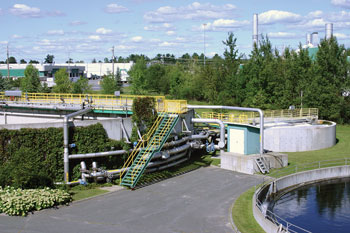
Figure 5
To produce its tissue, Cascades Tissue Group, Kingsey Falls, Quebec, employs several water reuse technologies that use only one-fifth of the pulp industry average.
- Water consumption reduction = 2.6 billion gallons of water annually
- Cost reduction = CA$24 million
Pulp and paper producers use a lot of water in their operations. Cascades Tissue Group, Kingsey Falls, Quebec, stands out because it uses about one-fifth of the industry average to produce tissue products (see Figure 5).
“In this business, you can use 50 cubic meters of water per ton of paper, or you can use 10 cubic meters. It all depends on how you recycle the process water to reuse it again and again in your process,” said Cascades Vice President of Environment Leon Marineau.
Recycled Content. “How do we do that? First, by using mainly recycled fiber. It’s a paper-making process requiring less water than using virgin fiber,” Marineau continued.
Reuse Process Water. “Second, by replacing almost all fresh makeup water with process water. We are proactive in maximizing water applications using process water. For some applications we reuse raw process water directly in the process instead of fresh water, and for others, we filter process water before reusing it.” In all, Cascades, through its reclamation and reuse efforts, saves 2.6 billion gallons of water annually, translating to a savings of CA$24 million.
5. BASF
BASF is one of the world’s largest chemical companies, employing 111,000 people globally—1,400 at its new North American headquarters in Florham Park, N.J. The company has 99 manufacturing sites in North America. Five of BASF’s six business segments operate here: Chemicals, Plastics, Functional Solutions, Performance Products, and Agricultural Solutions.
“Our global target is to reduce organic substances from our wastewater in all of our manufacturing facilities by 80 percent by 2020 compared to 2002, and heavy metals by 60 percent during the same period,” said BASF Director of Water Resources Linda Muroski. “In addition to creating a cleaner outflow to the environment, our objective is to recycle a higher percentage of our proc-ess water so we can use it over and over again, thus lowering our overall water demand.”
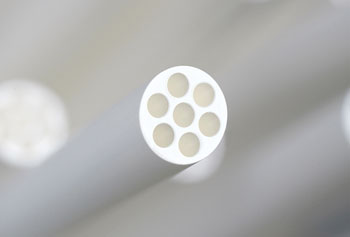
Figure 6
At 10 to 20 nanometers, the pore sizes of the high-tech membranes that water passes through during ultrafiltration are 3,000 times smaller than the diameter of a human hair. BASF’s Multibore ultrafiltration membranes remove suspended solids, bacteria, germs, and viruses from polluted water. This sophisticated, proven technology enables water treatment on an industrial scale.
Separation Technology to Reduce Water Use. The manufacturer plans to do this by leveraging some of the products it sells to customers. An example is the company’s Zetag® flocculant, which is an agent that promotes the separation of liquids from solids (see lead image).
“This product enables manufacturers of all sorts to recycle more of the water they use while producing a dryer, lighter cake solid, which makes it easier to transform it into fertilizer or fuel pellets or, if disposed, consume less energy when transporting it away from the plant,” Muroski said.
The company recently worked with a South American subsidiary of a major U.S. fruit and vegetable producer that wanted to reduce the amount of washwater it was using to remove dirt and sticky, natural latex from produce harvested from the field. By using the flocculant, the company was able to reduce latex contaminant, extend time between process cleaning cycles, and increase water reuse. The water process, which is FDA-approved, is providing significant annual savings for BASF’s customer.
“Our customer was wasting 800 cubic meters of water on a daily basis,” explained Muroski. “With our material they have been able to recycle the water completely, having to add water only to compensate for evaporation.” While this may not sound like a lot, the customer operates 365 days a year, so the total wastewater was 292,000 cubic meters annually. The average water tariff in South America is US$1.32 per cubic meter, so this translates to a yearly savings of US$385,440.
Ultrafiltration to Reduce Water Use. BASF is also expert in ultrafiltration. The company’s Multibore® membranes treat process water by removing bacteria and viruses, making it ideal for cooling towers and boilers in food and beverage plants and many other facilities (see Figure 6).
Accessing Surface and Well Water to Reduce Water Use. The company is keen to help customers use as much local surface and well water as possible for their operations. “In many manufacturing cases, it doesn’t make sense to use drinking water where on-site ultrafiltered water will work just as well,” Muroski said. “Bacteria growth in products with a high water content is an important issue. The membranes can condition that water, while our biocides and defoamers can provide ongoing security.”
Being Smart About Fresh Water Use
BASF’s Muroski said that manufacturers should be selective about water use. “Too many industries rely too heavily, and unnecessarily, on top-grade drinking water from municipal treatment plants when conditioned or recycled raw and process water will do just as well.”
Cascades’ Marineau added that saving water also helps save energy. “Those are the two biggest factors in our business of making paper. Year after year we need to improve on water and energy reduction.”
Leadership in water conservation lives. It’s reassuring that companies such as Ford, Kimball Office, Miller-Coors, Cascades, and BASF are not only counting profits, but also the precious drops of water they use. Their conservation efforts will help us continue to quench our thirst and drive our economy and industrial processes in the future.

Side by side, we move metal fabrication forward.
FMA unites thousands of metal fabrication and manufacturing professionals around a common purpose: to shape the future of our industry, and in turn shape the world.
Learn More About FMA

